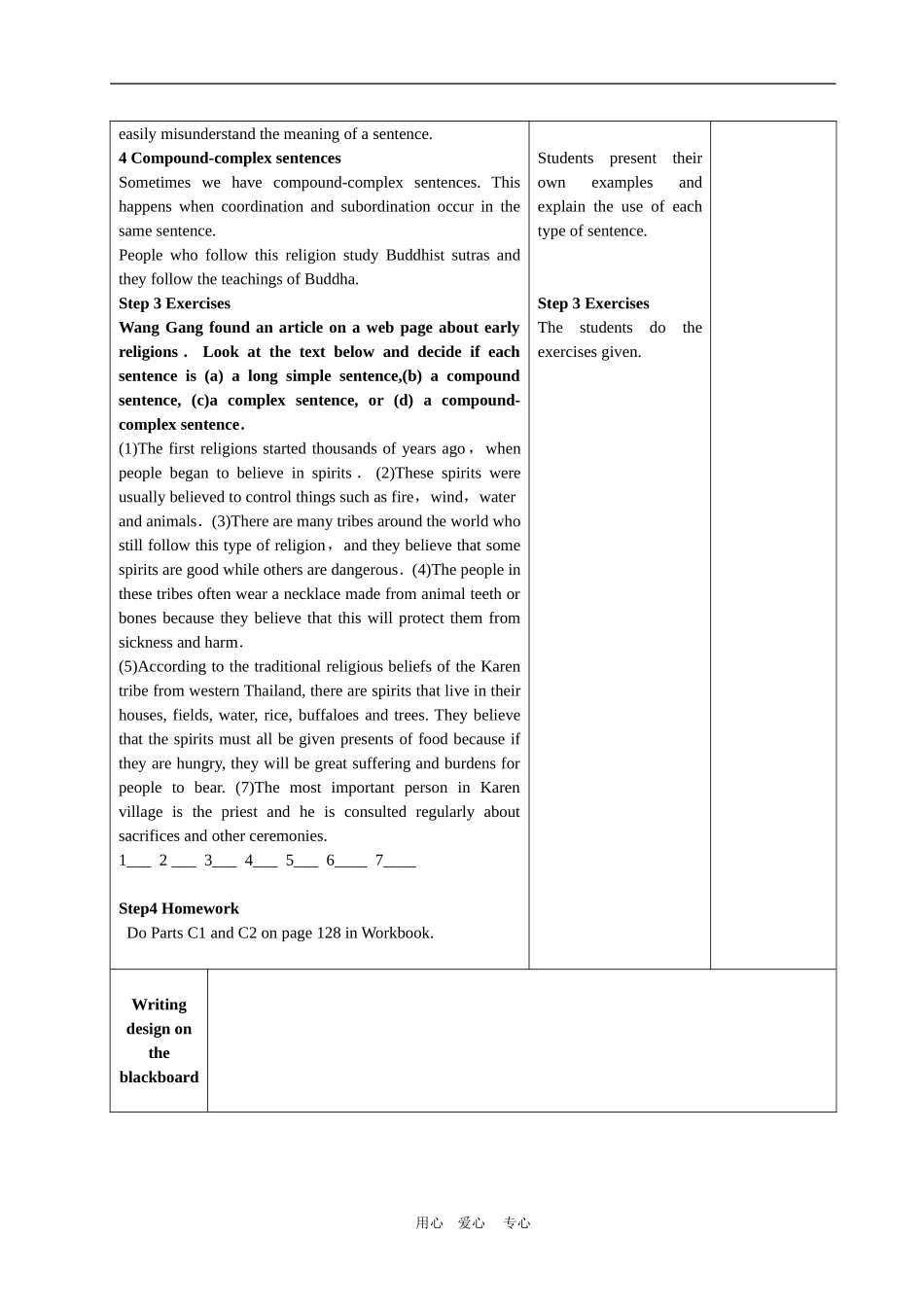No. 用案时间: 月 日 用案人: TeachingcontentModule 9 Unit 4 Behind beliefsGrammar and usage Teaching objectives1. To review three main subordinate clauses—the adverbial clause, the noun clause and the attributive clause.2. To know what each clause can be used to express and which conjunctions can be used in each clause.3. To apply what they have learnt by fulfilling some written tasksTeaching focus and difficulties1. The adverbial clause.2. The attributive clause.3. To identify each clause in a sentence and use them in different situations.Teaching methods1. Direct explanation.2. Practice.Teachingaids1. Projector or multi-media projector2. Blackboard.Teaching procedure:Teacher’s activitiesStudents’ activitiesSupplementStep 1 Lead inAnalysis of complicated sentenceWhen we read complicated sentences, we might need to analyze them so that we can understand them better.Step2 Explanation1 Long simple sentenceEvery sentence of this type contains a subject and a predicate. In these sentence, it is useful to identify the subject and the predicate. The subject is what the sentence is about and the predicate tells us something about the subject and always includes a verb.Islam was started about 1,400 years ago by a man called Muhammad.2 Compound sentence.In Compound sentence, there are two or more clauses. These clauses are often linked by coordinators such as and, but, or. Each clause can stand on its own.There are many idioms used in English and quite a few of them come from the bible.3 Complex sentenceA complex sentence is made up of a main clause and one or more subordinate clauses. They are linked by subordinators such as because, when, where, if, since,that,unless,whose,while and although.Unless you recognize whe...


